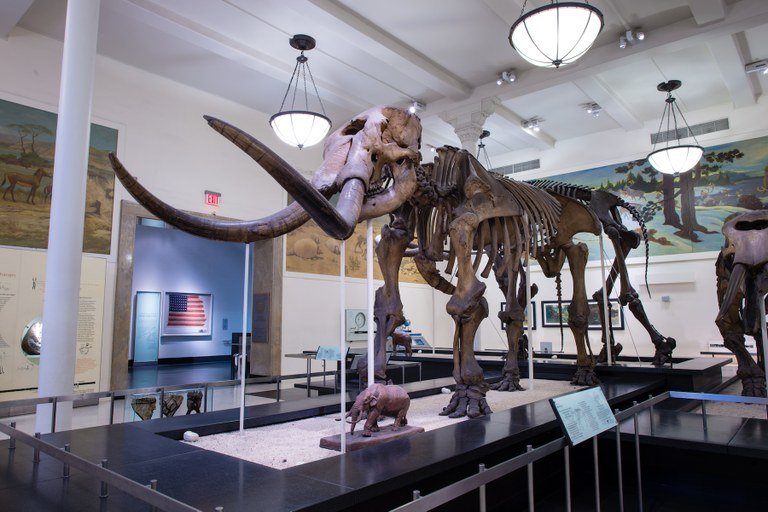The continental migrations of American mastodons
As part of a large collaborative project, researchers at the Ancient DNA Centre conducted the first large scale phylogeographic analysis of American mastodons and showed the repeatedly migrated vast distances in response to glacial retreat.
Sep 01, 2020
New research published today in Nature Communications describes the first wide-scale analysis of American mastodon mitochondrial genomes, and the first phylogeographic analysis of browsing megafauna in North America. An international collaboration involving scientists from the McMaster Ancient DNA Centre recovered 33 complete American mastodon mitochondrial genomes from across the continent and providing the first look at mastodon diversity across their range. Using molecular dating dating the researchers also showed the multiple clades in Beringia date to two different time periods, suggesting mastodons repeatedly migrated long distances during interglacials, as glaciers retreated and forests and wetlands expanded over most of North America. Consistent with this pattern the scientists also noted that these northern clades had low levels of mitochondrial diversity in comparison to more stable populations from south of the ice sheets. The authors also raised a warning about other present-day species exhibiting similar expansion patterns. Although these range expansions are sometimes seen as a good signal these species are adopting to climate change, if the southern populations are lost this could result in long term genetic consequences making them more vulnerable to extinction in the future.
American mastodon mitochondrial genomes suggest multiple dispersal events in response to Pleistocene climate oscillations
Authors: Emil Karpinski, Dirk Hackenberger, Grant Zazula, Chris Widga, Ana T. Duggan, G. Brian Golding, Melanie Kuch, Jennifer Klunk, Christopher N. Jass, Pam Groves, Patrick Druckenmiller, Blaine W. Schubert, Joaquin Arroyo-Cabrales, William F. Simpson, John W. Hoganson, Daniel C. Fisher, Simon Y. W. Ho, Ross D. E. MacPhee, & Hendrik N. Poinar
Nature Communications, September 2020. DOI: https://doi.org/10.1038/s41467-020-17893-z
Abstract
Pleistocene glacial-interglacial cycles are correlated with dramatic temperature oscillations. Examining how species responded to these natural fluctuations can provide valuable insights into the impacts of present-day anthropogenic climate change. Here we present a phylogeographic study of the extinct American mastodon (Mammut americanum), based on 35 complete mitochondrial genomes. These data reveal the presence of multiple lineages within this species, including two distinct clades from eastern Beringia. Our molecular date estimates suggest that these clades arose at different times, supporting a pattern of repeated northern expansion and local extirpation in response to glacial cycling. Consistent with this hypothesis, we also note lower levels of genetic diversity among northern mastodons than in endemic clades south of the continental ice sheets. The results of our study highlight the complex relationships between population dispersals and climate change, and can provide testable hypotheses for extant species expected to experience substantial biogeographic impacts from rising temperatures.
- Mastodons traveled vast distances across North America to adapt to climate change, says new research - McMaster Brighter World
- Monumental DNA Study Reveals Secrets of North American Mastodons - Gizmodo
- Mastodons migrated across extreme distances due to climate change, study says - CNN
- Mastodon migrations north offer clues about today’s animal movements, study says - The Star
- When Earth Warmed Between Ice Ages, Mastodons Migrated North - Haaretz
- Mastodons headed north to beat the heat: Climate change 800,000 years ago drove the mammoth-like creatures to travel vast distances across North America - Daily Mail
Discussion Panels
- Mysteries of the Mastodons (Facebook Live) - Yukon Beringia Interpretive Centre and the American Museum of Natural History
- Paleo Talks Ep. 20 "Migrations of American Mastodons" (Facebook Live) - Gray Fossil Site and East Tennessee State University
